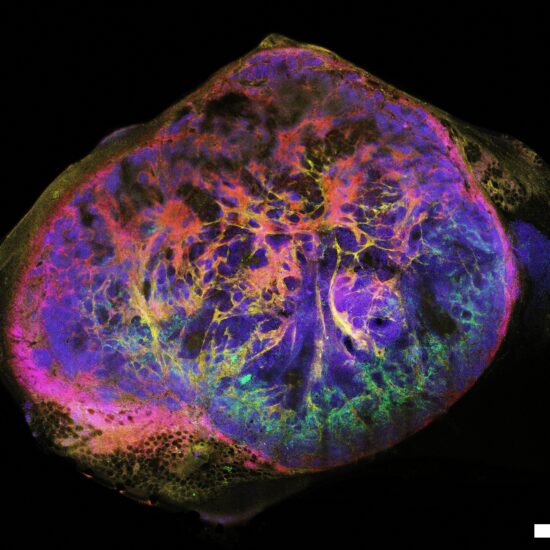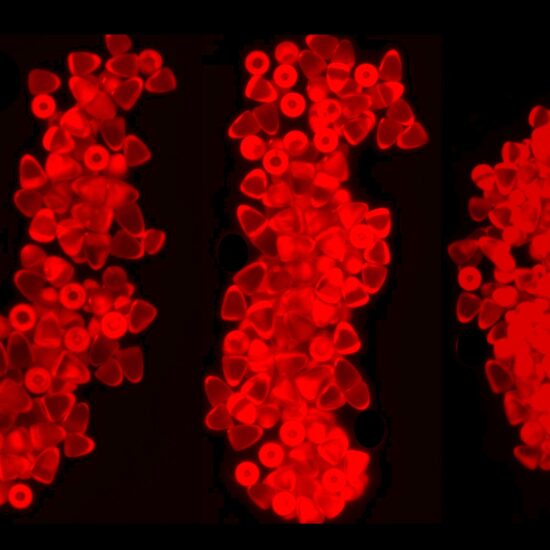Main intro
The Office of the Associate Dean for Research and Graduate Education hosts an annual Retzky College of Pharmacy (COP) “Images of Research” competition. The purpose of the competition is to assemble a portfolio of the most innovative and creative images to convey the range of research taking place in COP. These images will be used to promote, advance and represent our College both in printed and digital media.
2024 Image Competition Winners
132 people voted for the best image in the 14th Annual Images of Research Competition! Congratulations to our winners, whose images are featured below with the number of votes received.
View all Original 2024 Images

The broken heart brain
This is a 3D immunofluorescence image capturing the complete vasculature network of the mouse brain, stained with CD31-Alexa633. It resembles a broken heart – hence its name.
-Jingtian Zheng, PSCI Postdoc

Structures and patterns of life and death
From the archive of unusable data: mouse breast tumor image revealing the different compartments of the tumor microenvironment. Blue, the nuclei, representing single cells. Green, the tumor mass expanding. Yellow, its matrix holding it together- entrapping the immune cells, represented in red. Zoom in and observe this battlefield. See the immune cells, immobile, defeated where the matrix is thick- see them infiltrate the tumor mass where the matrix is thinner. Count the number of cells in the zoomed in field of view and envision the scale of this combat, in an area smaller than a millimeter squared. Look at the edges of the tumor, where the cells cascade into the surrounding media. Note the web-like structure of the matrix supporting its tumor. These are the structures and patterns of life and death; they are the manifestations of the universe recreating itself, in us; imaged with light. It is simple, and complex, and we are so lucky to see it.
-Elie Abi Khalil, PSCI Graduate Student

UIC Shaped for Drug Delivery
This image showcases the UIC logo creatively reimagined using cone-shaped microgels that form a granular hydrogel. These microgels are linked through photocrosslinking and embedded with fluorescently labeled lipid nanoparticles, demonstrating their potential for sustained drug delivery of various therapeutics. The customizable shapes of these granular hydrogels, combined with their cell infiltration capabilities, open new avenues for personalized and targeted drug delivery systems.
-Angeliki Andrianopoulou , PSCI Graduate Student